species
habit
nectar color
Mione #
Altitude (m)
Corolla size (mm);
Radial corolla thickenings ?
J. herrerae
shrub
nectar red
3,000 - 3,800
campanulate with a revolute limb;
35-45 broad at mouth X 15-20 long (deep)
light green
yes, evident in photo
J. neei
shrub
nectar red
2,645
green turning to blue with age
yes, evident in photo at left
not notched
Peru, Dept. Amazonas
2,994
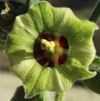
J. paneroi
shrub
nectar red
Peru, Dept. Cajamarca
3,200 - 3,550
campanulate with a revolute limb;
23-25 broad at mouth X 5-10 long (deep)
green
yes, evident in photo
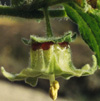
suffrutescent or shrub
nectar red
Peru, Dept. Cajamarca
2,960 m
corolla form:
Corolla Size: limb 25-27 mm long, tube 12-12.2 long X 12-13 diameter
Wurdack 1177 (K, NY, US)
shrub
nectar orange
2,750-2,850
no data;
30 - 34 mm broad at mouth X no data

J. dendroidea
shrub
nectar red
Peru, Dept. La Libertad, prov Pataz
3,200 - 3,523
hairs all or predominatnly dendritic
campanulate;
32 mm broad X 11 mm long (deep)
green
yes, evident in photo

shrub
nectar red
Peru, Dept. Huanuco, prov Pataz
3,727 m
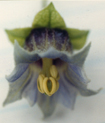
J. leivae
suffrutescent or shrub
nectar red
Peru, Dept. Cajamarca
2,630 - 2,650
urceolate with a revolute limb; 14 broad at mouth, 10 broad at base X 7 - 9 long (deep)
the limb blue-violet,
the tube red-violet
yes
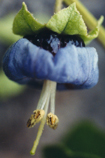
species
habit
nectar color
Mione #
Altitude (m)
Per Inflor
Corolla size (mm);
Corolla color
Radial corolla thickenings
?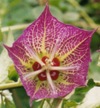
J. weberbaueri
shrub
red-orange nectar
3,000 - 3,800 m
(except for base of filament and adax face of corolla)
violet
yes, conspicuous in photo
J. grandibaccata, J. guillermo-guerrae
shrub
nectar red
3,400-3,530
green to green-blue; blue inside
Yes
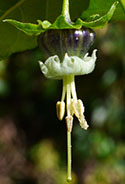
J. ventricosa
shrub
nectar orange-red*
2,900-3,755
urceolate, limb revolute; 12-14.5 broad X 8-10 long (deep)
limb whitish to pale green or pale yellow, tube red-violet
Yes

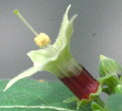
shrub
nectar red*
to 500
species
habit
nectar color
Mione #
Altitude
Per Inflor
Corolla size (mm)
corolla color
Radial corolla thickenings?
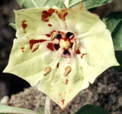
herbaceous to suffrutescent
nectar red
0 - 500 m, and in Andes 1,600 - 2,550 m
crateriform rotate
to 49 broad
greenish-yellow or yellow-green
no
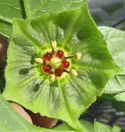
J. calliantha
herbaceous
nectar orange to red
711, 758, 855, 856
1,420 - 2,100 m
campanulate
Aftter pickled: 3 cm across X 1 cm deep; fresh fl 3.4 cm across
green
no
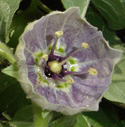
J. quipuscoae
herbaceous to suffrutescent
nectar red
species
habit
nectar color
Mione #
Altitude (m)
Per Inflor
Ccorolla size (mm)
corolla color
Radial corolla thickenings?
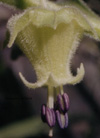
J. biflora
shrub
usually clear, can turn amber or orange* as flower ages
Peru, Dept. Junin
2,700 - 3,200
green
yes
J. contumacensis
shrub
netar clear or orange*
Peru, Dept. Cajamarca
2,530 - 3,000
green
slightly
J. sanchez-vegae
shrub
nectar clear in nature,
can turn orange*
in cultivation
Peru, Departments
La Libertad, Cajamarca, Amazonas.
green with a purple base
Yes
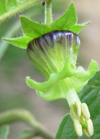
nectar usually clear,
can turn orange*
in cultivation, Koystyun, personal communication, observations on cultivated 723
species
habit
nectar color
Mione #
Altitude
Per Inflor
Corolla size (mm)
corolla color
Radial corolla thickenings?